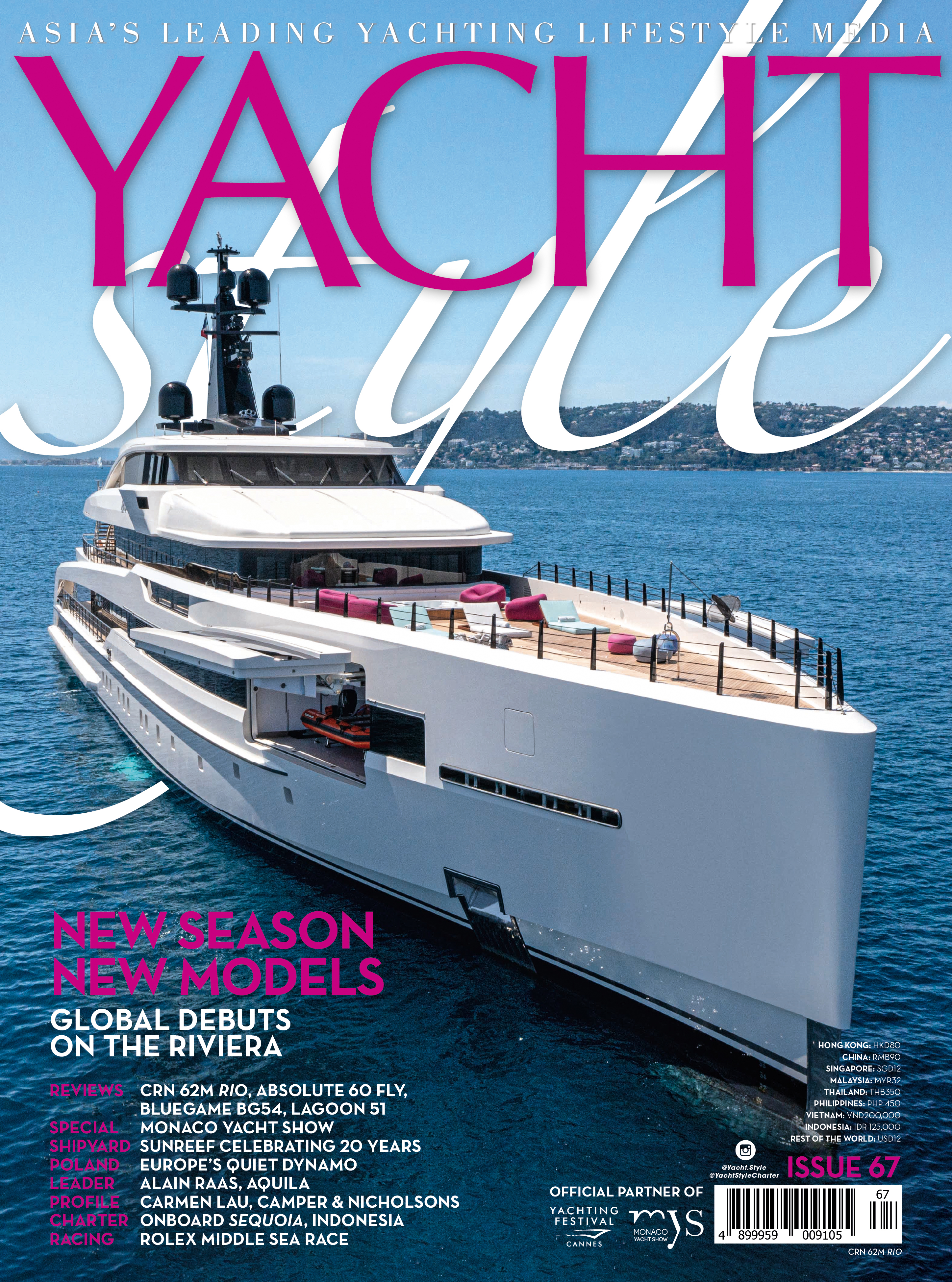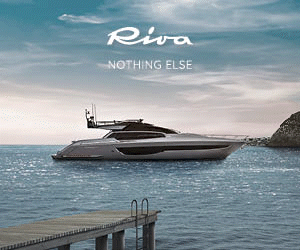Tri-deck powercat building in Thailand
SHARE
- May 18, 2021
- 4:12 pm
The Floeth Yachts shipyard in Rayong is set to deliver a 110ft wave-piercing, tri-deck powercat in the second half of 2021. By Bill Gladstone.
Floeth is building the 110ft wave-piercer near Pattaya
Floeth Yachts is preparing to launch its biggest-ever build, with the 110ft Independence set to emerge from the Rayong shipyard as one of the world’s biggest wave-piercing catamarans. Sea trials could start as early as June, with the boat expected to be completed by September.
Fitted with a diesel-electric hybrid propulsion system along with solar panels for non-propulsion operations, the tri-deck powercat sold to a Thailand-based client is under construction at Floeth’s 11,200sqm seaside shipyard beside the Mataphut Industrial Park, southeast of Pattaya in the Gulf of Thailand.
Designed by Thailand-based Albatross Marine Design, the wave-piercing powercat requires a complex build process that isn’t suited for mass production.
Paul Reeves, Floeth’s Sales Manager, said: “The hull has a very fine bow, with reduced buoyancy. When it meets a wave, this means the hull pierces through the water rather than riding over the top. This results in a smoother ride compared to traditional designs and puts less mechanical stress on the vessel. It also reduces the boat’s wave-making resistance.”
The powercat is designed by Thailand-based Albatross Marine Design
Founded by Michael Floeth in 2008, the family-owned operation specialises in the production of sportfishing boats and custom catamarans. These include a 72ft wave-piercing catamaran that can run at 20-plus knots on a full load – it’s certified for 110 people – despite only being powered by two 380hp engines.
The shipyard also specialises in the use of PVC vacuum resin infusion, which guarantees the even flow of resin to the hull, particularly beneficial in large, complicated moulds. Floeth says the process delivers a yacht up to 25 per cent stronger and 30 per cent lighter than conventional fibreglass builds.
Floeth renewed its activity in the private and luxury catamaran market after the Covid-19 pandemic took its toll on many boatbuilding companies in Southeast Asia. About 80 per cent of the Rayong builder’s revenue was tied to the charter business, so the company was forced to look for other business opportunities.
For Independence, special attention was given to fuel efficiency, seaworthiness and ride comfort in a superyacht capable of long-distance voyages.
The wave-piercer’s two needle-like hulls extend beyond the bow to slice through waves, reduce resistance and improve speed and efficiency, meaning far less power is needed to travel at higher speeds. High bridge-deck clearance is another feature that benefits performance.
With two electric engines, Independence is predicted to have a minimum cruising speed of 16 knots, which is unique for an electrically powered boat of this size, according to Floeth.
The boat will have generators so that every 10-12 hours, it can either stop overnight while the generators recharge the batteries, or it can switch over to the two diesel-powered engines, whose main purpose will be for docking or extended cruising.
Albert Nazarov, founder of Thailand-based Albatross Marine Design, designed the yacht, which he says will have remarkable performance from eco-friendly power sources.
“This will be the world’s first trans-oceanic yacht where all the non-propulsion systems are green,” Nazarov said. “You will be able to cross the Atlantic twice without refuelling. The high-efficiency wave piercing hulls allow the boat to be driven at a cruising speed of 16 knots from a total of 780hp, with a fuel consumption of only 88 litres per hour.”


The non-propulsion systems include air-conditioning, galley operation, lighting and navigation equipment, which are all handled by clean energy provided by solar panels. This means guests and crew can enjoy a quiet night’s sleep in air-conditioned comfort without having to listen to the rumble of a generator. The yacht has a 45ft beam, with all guest accommodation on the main and upper decks, and the galley and crew quarters in the hulls.
The main deck starts with a large, completely covered aft cockpit, while the interior features a formal dining area and bar to port, and two separate lounges to starboard side. Forward is an enormous, full beam master cabin, with a forward-facing bed and lounge to starboard. Large glass doors lead to a covered private foredeck with a hot tub.
The upper deck has two large guest cabins, port and starboard, both with sea-facing beds and en-suite bathrooms. The aft deck has a large hot tub, bar and space for several sun loungers, while forward is the main pilothouse and an open foredeck with a C-shaped sofa.
The sundeck has a hardtop and features the upper helm, a bar and sun loungers. The yacht’s design has also evolved to include a huge, two-part hydraulic platform, with each half able to independently be lowered or raised to launch and retrieve jetskis, tenders, sailing dinghies and other toys. Floeth is also building a line of 65ft catamarans featuring electric propulsion.
www.floethyachts.com
www.amdesign.co.th
Multihulls Special 2021: Lagoon leads the way
In the first chapter of our ‘Kings of Cats’ cover story in Issue 59, Yacht Style profiles market leader Lagoon, which recently passed the 6,000 mark for cruising catamarans.



























